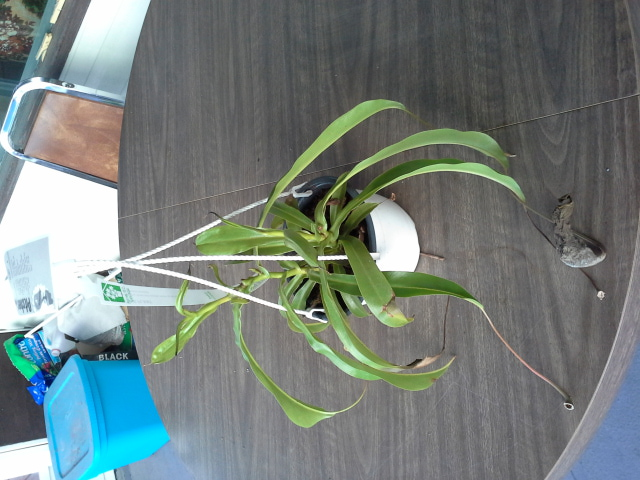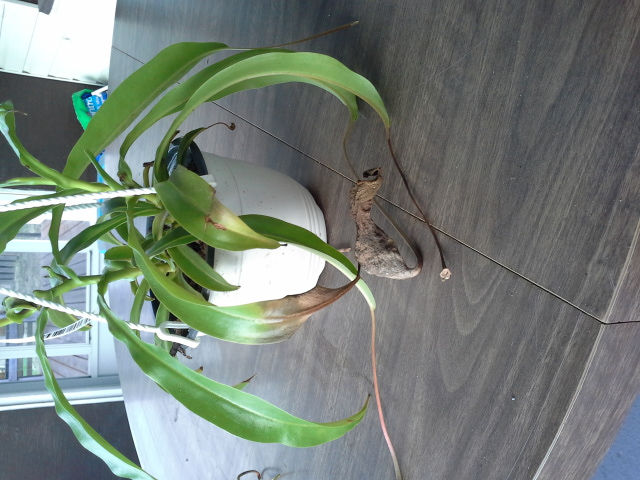Question
 pincher plant
pincher plant  dead
dead
Hi I live in Southernmost British Columbia with a hardiness zone of 4. I bought my plant from a local grocery store. It came to me爓ith 10 fully grown pinchers and 3 budding. I have had my plant now for 7 months and all my pinchers are dead/ dieing. I beleave I have a Nepenthes x Deroose Alata hybrid a cording to pictures I've seen on the web. It lives on my book shelf (in the 6" hanging pot) close to the cling and out of direct sunlight from the south window. As my house has vary little bug activitie, i have been feeding it once every 10 days with grashoppers or maple bugs ** rotating through the pinchers There is lots of new leaf growth but no baby pinchers. Our yearly Temps are 45o C of in summer and -15o C for winter. So is this dormancy or have I killed it?
** maple bugs or boxelder bug爄s a North American species of爐rue bug.
Thx
AnswerHello Tara,
Thee are two things to consider in this situation.
1. The plant may be experiencing a change in humidity levels in your house. If your house has lower humidity levels than where the plant was bought, or the plant is experiencing changes in humidity on a drastic level in your house, it will lose its pitchers. Try to maintain a stable humidity level and the plant will adapt and begin pitchering again once it recovers.
2. It is quite likely that you have placed the plant in conditions with too little light. The leaves look very long and wide as well as very dark green. The death off all older pitchers and failure of new pitchers is indicative that the plant simply needs more light. Nepenthes cannot be grown like an Ivy indoors. Nepenthes require a very high level of light. When the instructions say that a plant needs indirect light, it really means that direct sunlight outside might burn the plant. Indoors, you could place the plant in a window as windows do not allow direct sunlight to pass. Sunlight is filtered through the glass, so windows are never really direct sunlight. Having the plant hanging near the ceiling is also limiting the amount of light it receives. Place the plant more fully in an east window preferably so it can receive several hours of morning sun. The increase in light should kick start the plant into pitcher production again. If that does not work, add high intensity florescent lights of the 23 watt compact bulb type or the 40 watt shop light variety about a foot over the plant. About enough light to provide at a minimum 6000 to 12000 lumens should give the plant exactly what it needs.







